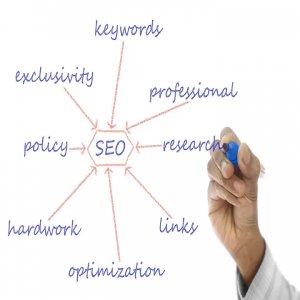
Mastering Business Communication: The Hidden Key To Career And Organizational Success
What is Business Communication?
Business communication is more than just exchanging words—it is the structured transfer of ideas, knowledge, and instructions within and outside an organization. It takes shape through emails, meetings, presentations, digital platforms, or even subtle non-verbal cues. When communication is done well, it creates clarity, minimizes conflict, and aligns people with business objectives.
Professionals who master both verbal and non-verbal communication quickly rise above the crowd. They not only transmit information but also build trust, relationships, and collaboration.
Why Strong Business Communication Matters Today
In today’s globalized and hyper-competitive economy, speed and clarity are everything. Miscommunication can delay projects, frustrate customers, and create internal conflict. On the other hand, open communication ensures:
-
Employees clearly understand their roles and responsibilities.
-
Teams collaborate smoothly, regardless of location.
-
Customers and stakeholders receive timely, accurate feedback.
-
Leaders can translate vision into actionable strategies.
Organizations that actively invest in communication skills see higher morale, lower turnover, and stronger business outcomes.
Core Building Blocks of Effective Communication
-
Clarity and Conciseness – Messages should be simple, precise, and free from jargon. Transparency is vital, especially in cross-departmental or cross-cultural settings.
-
Active Listening – Communication is two-way. Listening with intent fosters better understanding, reduces errors, and builds stronger relationships.
-
Non-Verbal Signals – Body language, facial expressions, and posture can amplify or contradict spoken words. In meetings and video calls, non-verbal cues are as important as speech.
-
Feedback Loops – Constructive and timely feedback helps teams grow, correct mistakes, and stay aligned with goals.
-
Cultural Sensitivity – In global business environments, understanding cultural nuances avoids misinterpretation and builds inclusivity.
Communication in the Digital Age
Technology has redefined the way professionals interact. Choosing the right medium makes all the difference:
-
Emails – Best for formal documentation and detailed instructions.
-
Instant Messaging (Slack, Teams) – Perfect for quick updates or casual interactions.
-
Video Conferencing – Essential for remote collaboration with a human touch.
-
Internal Newsletters – Great for company-wide updates and announcements.
-
Social Intranet Tools – Foster collaboration and transparency.
The effectiveness of a message is often determined by the appropriateness of the channel used.
Internal vs. External Business Communication
Internal Communication – Flows inside the company:
-
Upward: Employees to management.
-
Downward: Leaders to employees.
-
Lateral: Collaboration between departments.
External Communication – Directed outward toward customers, investors, suppliers, and the public. It shapes customer experience, brand reputation, and stakeholder confidence.
Barriers to Effective Communication
Even with the best intentions, several obstacles can derail communication:
-
Language differences in multinational teams.
-
Emotional barriers like stress, ego, or bias.
-
Information overload leading to confusion.
-
Poor listening skills causing missed instructions.
-
Technological gaps creating inefficiencies.
Recognizing these barriers is the first step to overcoming them.
How to Improve Your Communication Skills
-
Enroll in training – Courses, webinars, and workshops strengthen writing, speaking, and listening abilities.
-
Practice empathy – Frame messages from the audience’s perspective.
-
Leverage storytelling – Narratives make messages memorable and persuasive.
-
Use visual aids – Charts, infographics, and slides simplify complex data.
-
Seek feedback regularly – Feedback uncovers blind spots and drives continuous growth.
Communication and Leadership
Strong leaders are always strong communicators. They inspire teams, resolve conflicts, and articulate strategies with clarity. A leader’s communication should:
-
Motivate and energize teams.
-
Demonstrate strategic listening.
-
Guide decision-making with clarity.
-
Navigate conflicts with diplomacy.
In short, effective communication is the foundation of effective leadership.
The Future of Business Communication
The workplace of the future will be powered by AI tools, remote teams, and digital-first communication, but the human element will remain irreplaceable. Emotional intelligence, adaptability, and authenticity will distinguish the best communicators from the rest.
Companies that invest in:
-
Upgrading communication technologies,
-
Training employees, and
-
Building a transparent, open culture,
…will stand apart in tomorrow’s business landscape.
Final Thoughts
Business communication is not just about sharing information—it’s about building trust, shaping culture, and driving growth. From boardroom meetings to international negotiations, communication is the invisible force that determines success.
Whether you are a manager, entrepreneur, or aspiring leader, mastering the art of communication is your ultimate career advantage. Those who can connect, inspire, and communicate effectively will not just survive in business—they will thrive and lead the future.
Author Bio
Article Comments
No Comments!
At present there are zero comments on this article.
Why not be the first to make a comment?
Similar Articles
Search Pages
User Upgrade
account to full use of editor,
Including hyperlinks
Article Categories
There are zero sub-categories in this parent category.
There are zero sub-categories in this parent category.

















